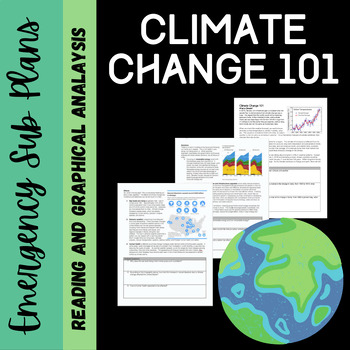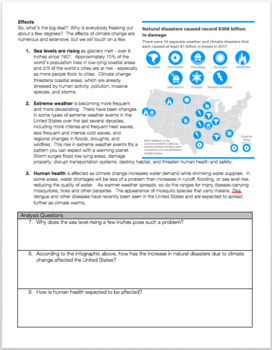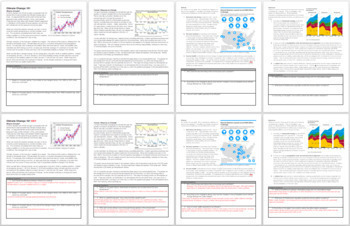Emergency Sub Plans: Climate Change 101
Biology with Brynn and Jack
954 Followers
Grade Levels
7th - 12th, Homeschool
Subjects
Resource Type
Standards
NGSSHS-ESS3-1
NGSSHS-ESS3-6
Formats Included
- PDF
Pages
8 pages
Biology with Brynn and Jack
954 Followers
What educators are saying
Thank you so much for the great idea! I really appreciate your hard work and willingness to share your work!
Used it with an assistant during my absence. My students engaged with it quickly and managed to finish the work on time. Highly recommend it.
Also included in
- This set of 5 EDITABLE, no-prep sub plans are designed for a life science class and are meant to be completed individually. Print them out, and you're ready to go!Included in this set:Mitosis, Mutations and Cell Maturation1. analyze the cell cycle and why a cell might undergo apoptosis.2. connect miPrice $9.99Original Price $14.95Save $4.96
- This bundle of 11 EDITABLE, No-Prep assignment is meant to be completed individually and is perfect for an emergency sub plan in any science class. Each page asks students to analyze text and graphs. Print it out, and you're ready to go.Included in this file is a PDF and a Word document so you can fPrice $19.99Original Price $32.89Save $12.90
Description
This 4 page, No-Prep assignment is meant to be completed individually and is perfect for an emergency sub plan in any science class. Each page asks students to analyze text and graphs. Print it out, and you're ready to go. This assignment provides a broad outline for the causes, effects and solutions to climate change and requires students to:
1. examine the differences between weather (short term trends) and climate (long term trends).
2. connect human activities (carbon emissions) to climate change.
3. assess the current and anticipated effects of climate change.
4. and analyze several solutions.
Total Pages
8 pages
Answer Key
Included
Teaching Duration
45 minutes
Report this resource to TPT
Reported resources will be reviewed by our team. Report this resource to let us know if this resource violates TPT’s content guidelines.
Standards
to see state-specific standards (only available in the US).
NGSSHS-ESS3-1
Construct an explanation based on evidence for how the availability of natural resources, occurrence of natural hazards, and changes in climate have influenced human activity. Examples of key natural resources include access to fresh water (such as rivers, lakes, and groundwater), regions of fertile soils such as river deltas, and high concentrations of minerals and fossil fuels. Examples of natural hazards can be from interior processes (such as volcanic eruptions and earthquakes), surface processes (such as tsunamis, mass wasting and soil erosion), and severe weather (such as hurricanes, floods, and droughts). Examples of the results of changes in climate that can affect populations or drive mass migrations include changes to sea level, regional patterns of temperature and precipitation, and the types of crops and livestock that can be raised.
NGSSHS-ESS3-6
Use a computational representation to illustrate the relationships among Earth systems and how those relationships are being modified due to human activity. Examples of Earth systems to be considered are the hydrosphere, atmosphere, cryosphere, geosphere, and/or biosphere. An example of the far-reaching impacts from a human activity is how an increase in atmospheric carbon dioxide results in an increase in photosynthetic biomass on land and an increase in ocean acidification, with resulting impacts on sea organism health and marine populations. Assessment does not include running computational representations but is limited to using the published results of scientific computational models.







